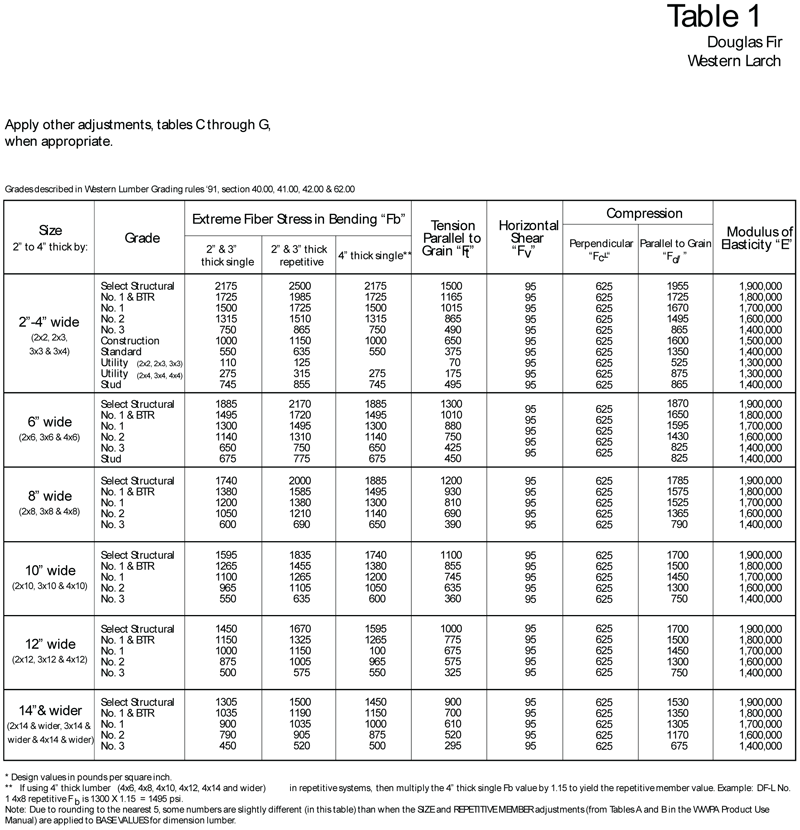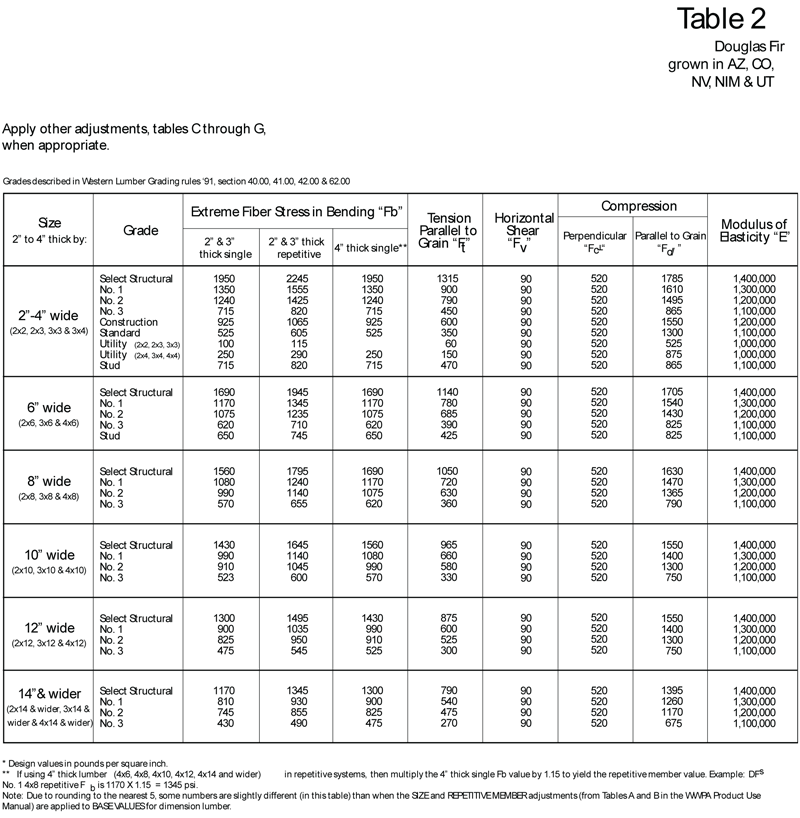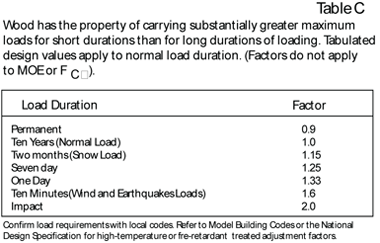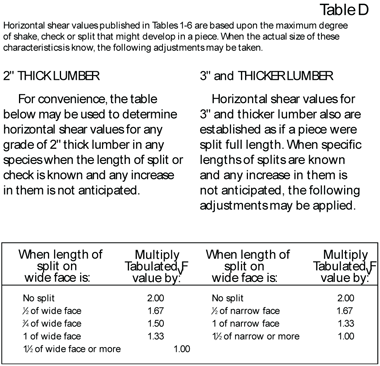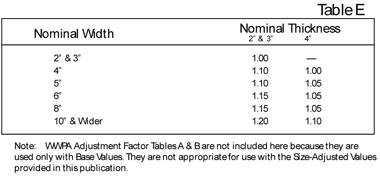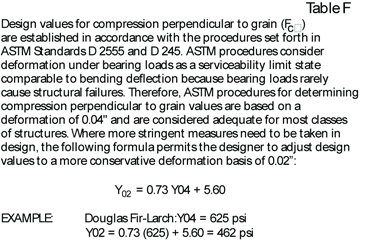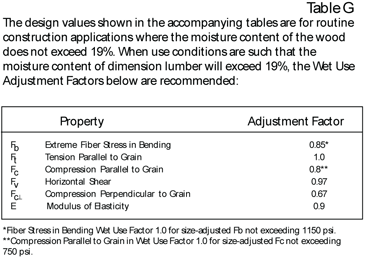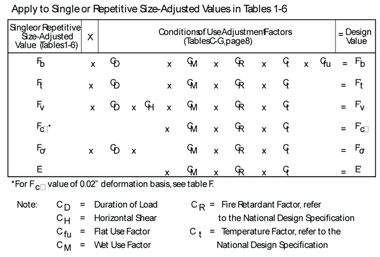 |
|
|
| 2x4, 2x6, 2x8, 2x10, 2x12 |
GRN |
22’ to 32’ |
| 3x4, 3x6, 3x8, 3x10, 3x12 |
GRN |
8’ to 24’ |
| |
|
|
| 2x4, 2x6, 2x8, 2x10, 2x12, 2x14 |
GRN |
8’ to 24’ |
| |
|
|
| 2x4, 2x6, 2x8, 2x10, 2x12, 2x14, 2x16 |
GRN |
8’ to 28’ |
| 3x4, 3x6, 3x8, 3x10, 3x12, 3x14, 3x16 |
GRN |
8’ to 24’ |
| 4x4, 4x6, 4x8, 4x10, 4x12, 4x14, 4x16 |
GRN |
8' to 24' |
| |
|
|
| 3x4, 3x6, 3x8, 3x10, 3x12, 3x14, 3x16 |
GRN |
8’ to 32’ |
| 4x4, 4x6, 4x8, 4x10, 4x12, 4x14, 4x16 |
GRN |
8’ to 32’ |
| |
|
|
|
|
| 3x6 |
KD |
8’ to 20’ |
| 4x4, 4x6, 4x8, 4x10, 4x12 |
KD |
8’ to 24’ |
|
 |
|
| 2x4, 2x6, 2x8, 2x10, 2x12 |
KD |
8’ to 28’ |
| 3x4, 3x6, 3x8, 3x10, 3x12 |
KD |
8’ to 24’ |
| 4x4, 4x6, 4x8, 4x10, 4x12 |
KD |
8’ to 24’ |
| 6x6, 6x8, 6x10, 6x12 |
KD |
8’ to 24’ |
| 8x8, 8x10, 8x12 |
KD |
8’ to 24’ |
| |
|
|
|
| ● Surfacing |
| ● Resawing |
| ● Corbels |
| ● Knee Braces |
| |
|
|
| |
Call for current available inventory.
|
|
Click here to see our Material Safety Data Sheets Allowable Properties for Dimension Lumber WCLIB 2005
Heat Treated Packaging Regulations IPPC |
 |
| |
|
In the following tables, In-Grade-derived Base Values have been adjusted for size and repetitive member use for your convenience.
These tables are intended for those who are more comfortable selectinga size-adjusted number from a table rather than using a Base Value (which is a species constant) along with a Size Adjustment. These size adjusted values may be further adjusted for specific conditions of use (refer to Adjustment Factor Tables C-G on).
The Western Lumber Size-Adjusted Values can be directly compared to the pre-In-Grade design values and to Southern Pine empirical values. |
|
The results of the In-Grade Testing Program allowed for new species groupings. Instead of the ten Western Lumber species groups of the past, there are now six for increased ease of design. The individual species included in the Douglas Fir-Larch, Hem-Fir, Douglas Fir-South and Western Cedar groupings are essentially
unchanged. However, WWPA's Western Woods combination has been modified,and a new U.S. species grouping, Spruce-Pine-Fir (South), has been developed to include the Western spruces and Lodgepole Pine, represented by WWPA, along with Eastern species, represented by NELMA and NSLB. The individual species in each species grouping are listed below and in the table headings on the following pages. |
| |
DOUGLAS FIR-LARCH
Douglas Fir
Western Larch
DOUGLAS FIR-SOUTH
Douglas Fir grown in
AZ, CO,NV, NM& UT HEM-FIRM
Western Hemlock
Noble Fir
California Red Fir
Grand Fir
Pacific Silver Fir
White Fir |
 |
SPRUCE-PINE-FIR(SOUTH)
Englemann Spruce
Sitka Spruce
Lodgepole Pine
WESTERN WOODS
Alpine Fir
Ponderosa Pine
Sugar Pine
Idaho White Pine
Mountain Hemlock WESTERN CEDARS
Incense Cedar
Western Red Cedar
Port Orford Cedar
Alaska Cedar |
| |
|
|
|
|
The Size-Adjusted Values in this publication are derived by using species-group base values along with
the adjustment factors for each size. Repetitive member Fb values (for 2” to 4” wide by 2” & 3” thick lumber) are also provided. If using 4” thick lumber in a repetitive system, refer to ** footnote below each table.
Size-adjusted values may be further adjusted for specific conditions of use, e.g., Duration of Load, Horizontal Shear, Flat Use, Compression Perpendicular to Grain and Wet Use (for unusual situations in which lumber is used in circumstances where the moisture content will exceed 19%).
These conditions-of-use adjustments are presented in Tables C-G on. The following chart indicates how these
adjustments should be applied to the Size-Adjusted Values in this publication. |
| |
|
Design professionals are encouraged to use Base Values for Dimension Lumber, as presented in the Western
Lumber Grading Rules '91 and in the WWPA Product Use Manual. While the size-adjusted values in this publication are accurate (rounded up to the nearest 5), engineers, architects, specifiers and the truss industry are encouraged to use Base alues and base-value design procedures.
If lumber products are specified on the basis of Fb value, then the specification must be clearly identified as a Base-Value Fb or a Size-Adjusted Fb. Specifiers may continue to specify lumber products according to grade name (and paragraph number from a grading rules book) as in the past, because the grades have not changed.It is important to distinguish Base Value numbers from Size-Adjusted numbers if and when Fb values are used in a written specification. |
|
|

